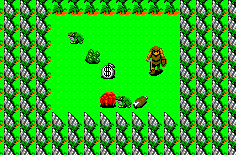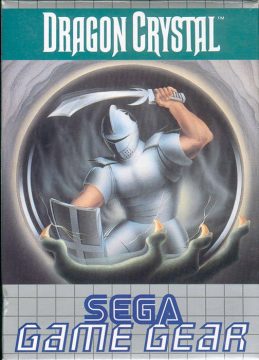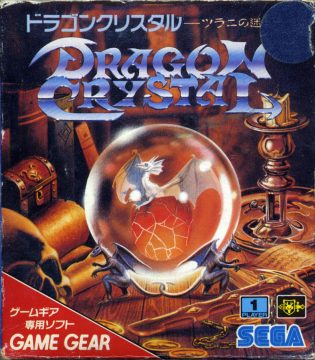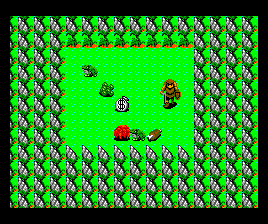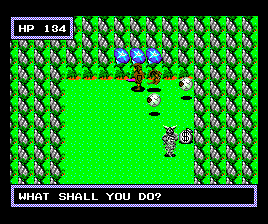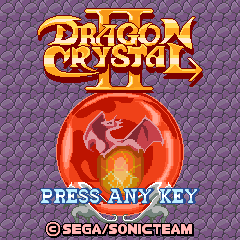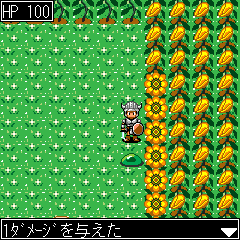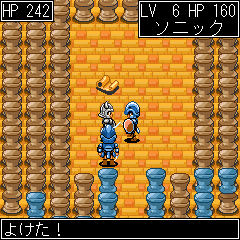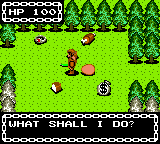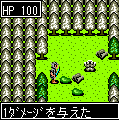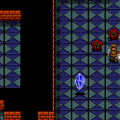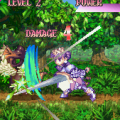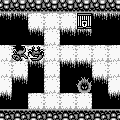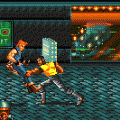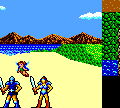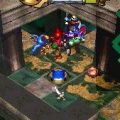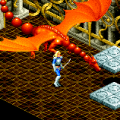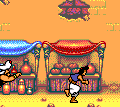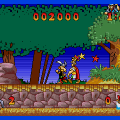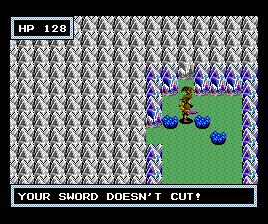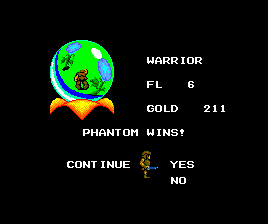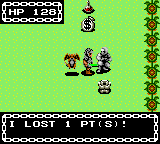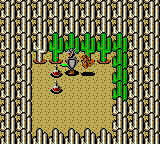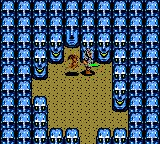- Fatal Labyrinth
- Dragon Crystal
Some of the changes were not for the better. Dragon Crystal reuses monster assets and sprites from Fatal Labyrinth but places them in different areas. It may be confusing for the player to face the Magician and Killer Bee as entry-level monsters in Fatal Labyrinth and then go to Dragon Crystal where they don’t appear until much later in the game (and much deadlier). Also in Dragon Crystal, the speed has been reduced considerably to a snail’s pace. The player can speed up the game by holding down the Start button, but that means to play the game at a decent pace involves keeping one finger glued to the Start button, which can cause some cramped hands on an actual Game Gear.
Sega also brought Dragon Crystal to the Master System soon afterwards, albeit only in Europe and Brazil (the last purveyor of fine Master System products). Again, the game was given a minor facelift. The wall graphics were updated again to include glaciers and chess pieces. Some of the items were renamed or changed. Most importantly, the speed could be toggled between slow and fast by pressing the Pause button. No more cramped hands! On the negative side, the exemplary music from the Game Gear version was replaced with more generic tunes. Why they were changed is not known: the Game Gear shares almost identical sound hardware with the Master System, and the same composer worked on both Game Gear and Master System versions.
Just like Fatal Labyrinth, Dragon Crystal was re-introduced to modern audiences through a release on the 3DS Virtual Console. It is a straight port of the Game Gear cartridge with no additions.
In 2002, before Android and iOS standardized mobile gaming, Sega ran a service in Japan called Sonic Cafe. For 315 yen a month (or roughly $2.78 as of this article’s rate), gamers could download and play several games on their cell phones. A year later after Sonic Cafe was introduced, Sega ported Dragon Crystal to the service. This version is largely based on the Game Gear version, however, the biggest difference is that players’ games were saved after each floor. Gold was also used as a ranking system, with the most gold hoarded earning top spots. Earn enough and you could also get a Dragon Crystal ringtone! Interestingly enough, Sega wasn’t done with the series yet, which leads to…
Dragon Crystal II was released on the Sonic Cafe service shortly after the original, and it aimed to be the definitive version. Not only were the graphics updated from its original 8-bit beginnings, but it also adds the ability for players to face off against each other in an arena setting or work together cooperatively through the dungeon floors. Players could also use the gold that they find in the dungeon to change the appearance of their character. The ranking system was also still in place so players could gauge how they were doing in both the arena and in the dungeons. The main game itself seems to be unchanged from its previous incarnations.
Both Dragon Crystal and Dragon Crystal II were playable through the Sonic Cafe system until the service was shuttered sometime in late 2012. It’s a shame that Sega hasn’t made any attempt to bring Dragon Crystal II back on any other platform, although it is fitting that the series that started on an online service should end on one as well.
It seems unlikely to think that Sega should revisit Dragon Crystal or Fatal Labyrinth sometime in the near future, although it also seems unlikely to think that the series would still have relevance in our modern 3DS era. Despite its simplicity, there is something satisfying about dungeon crawling and beating personal bests. The pick-up-and-play atmosphere makes it perfect for a handheld or phone. As Sega continues to embrace the mobile gaming platform, perhaps another Dragon Crystal-esque game will arrive sooner than later.
Comparison Screenshots
